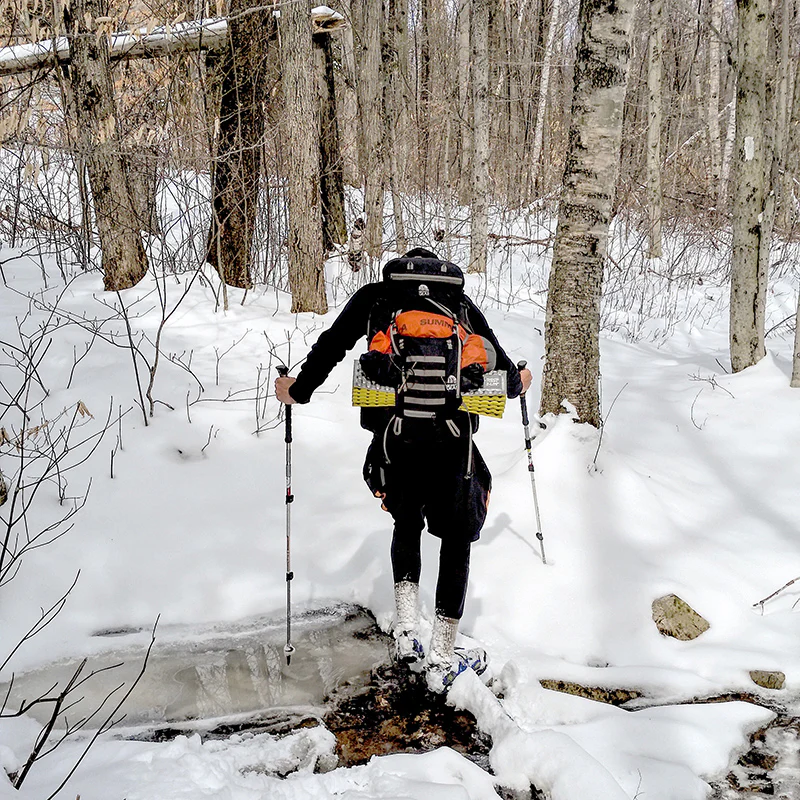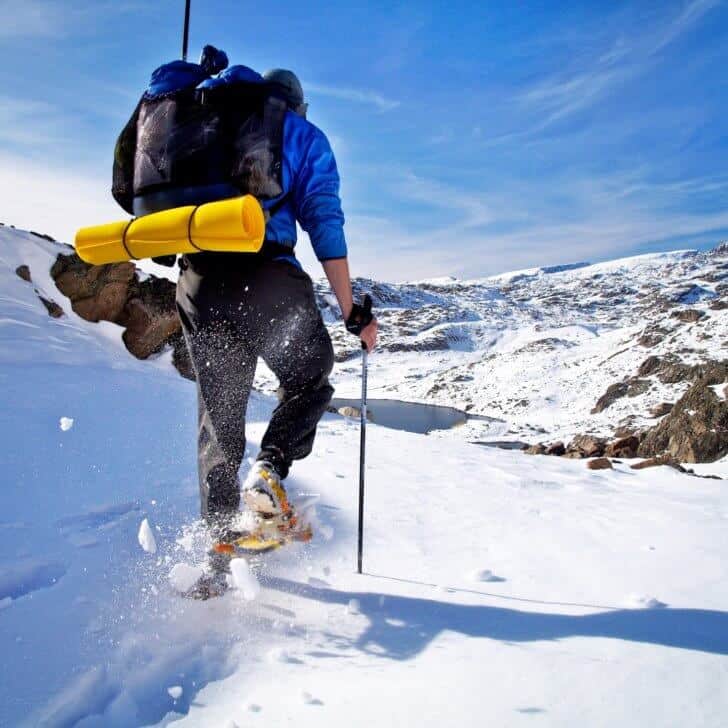I. Importance of Proper Gear for Winter Hiking

Winter hiking can be a rewarding and exhilarating experience, but it also comes with its own set of challenges and potential dangers. The cold temperatures, snow, ice, and unpredictable weather can make hiking in winter a more demanding and risky activity compared to hiking in other seasons. It is crucial for hikers to be well-prepared and equipped with appropriate gear to ensure their safety and enjoyment on the trail.
The role of appropriate gear in ensuring safety and enjoyment
Having the right gear is essential for winter hiking, as it not only provides protection against the harsh elements but also enhances comfort and overall hiking experience. Proper gear can help hikers stay warm, dry, and comfortable, enabling them to focus on the beauty of their surroundings and the joy of being outdoors. From clothing and layering to footwear and traction, each piece of gear plays a vital role in keeping hikers safe and prepared for the challenges of winter hiking.
II. Clothing and Layering for Winter Hiking
A. Thermal base layers and moisture-wicking fabrics
When gearing up for winter hiking, wearing the right clothing and layering is crucial for maintaining body heat and managing moisture. Thermal base layers made from materials like Merino wool or synthetic fabrics are designed to wick sweat away from the skin, keeping the body dry and insulated. This foundational layer is essential for regulating body temperature and preventing overheating or chilling during physical activity in cold weather.
B. Insulating layers and the importance of trapping body heat
Insulating layers, such as fleece jackets or down vests, are essential for trapping body heat and providing additional warmth. These layers create a barrier of air between the body and the outer environment, helping to retain heat and regulate body temperature. By choosing lightweight and compressible insulating layers, hikers can easily adjust their clothing to accommodate changes in weather and activity level while on the trail.
C. Waterproof and windproof outer layers for protection against the elements
Outer layers, including waterproof and windproof jackets and pants, are essential for shielding hikers from rain, snow, wind, and cold temperatures. These protective layers act as a barrier against the elements, keeping hikers dry and shielded from harsh weather conditions. Additionally, breathable outer layers allow moisture vapor to escape, preventing overheating and perspiration buildup inside the clothing.
III. Footwear and Traction for Winter Hiking

A. Insulated and waterproof boots for warmth and dryness
Choosing the right footwear is crucial for winter hiking, as hikers need to protect their feet from cold, wet, and slippery conditions. Insulated and waterproof hiking boots provide warmth and dryness, while also offering support, stability, and protection for the feet and ankles. High-quality winter boots with proper insulation and a durable, waterproof exterior are essential for keeping feet comfortable and safe during cold-weather hikes.
B. Traction devices such as crampons and microspikes for ice and snow
In winter, hikers often encounter icy and snow-covered terrain that requires additional traction for safe and secure footing. Traction devices, such as crampons or microspikes, can be attached to hiking boots to provide enhanced grip and stability on slippery surfaces. These devices feature spikes or cleats that grip into ice and snow, preventing slips and falls while navigating challenging winter trails.
C. Proper socks and foot care to prevent blisters and frostbite
In addition to choosing the right footwear, wearing proper socks and taking care of foot hygiene is crucial for preventing blisters, frostbite, and other foot-related issues during winter hiking. Moisture-wicking and insulated socks help keep feet dry and warm, reducing the risk of blisters and frostbite. Additionally, taking regular breaks to air out and dry socks, as well as applying foot balm or powder, can help maintain foot health and comfort throughout a winter hike.
IV. Essential Winter Hiking Equipment
Snowshoes are an essential piece of equipment for winter hiking, especially when navigating deep snow. They help distribute your weight over a larger surface area, preventing you from sinking into the snow. This makes it much easier to walk through deep snow and reduces the risk of exhaustion. Additionally, modern snowshoes are lightweight, adjustable, and designed for different types of terrain, making them a versatile and valuable tool for winter hikers.
B. Trekking poles for added stability and support

Trekking poles are another essential item for winter hiking, providing added stability and support on uneven and slippery terrain. In snowy and icy conditions, trekking poles can help you maintain your balance and reduce the strain on your legs and knees. They also provide extra propulsion when ascending steep slopes and offer support when descending slippery inclines. Adjustable and collapsible trekking poles are easy to pack and can be adjusted to the perfect length for your comfort.
When hiking in winter conditions, it’s crucial to be prepared for unexpected challenges and emergencies. It’s essential to carry navigation tools such as a map, compass, or GPS device to help you stay on course and find your way in low visibility conditions. Additionally, packing essential emergency equipment such as a first aid kit, headlamp, and emergency shelter can provide a sense of security in case of unforeseen circumstances. It’s also important to inform someone of your hiking plans and expected return time in case of an emergency.
V. Hydration and Nutrition for Winter Hiking
A. Importance of staying hydrated in cold weather
Staying hydrated is just as important in cold weather as it is in warm weather, if not more so. Winter air is drier, and the body still loses fluids through respiration and sweat, even in cold temperatures. Dehydration can lead to decreased performance, increased fatigue, and impaired judgment, which can be dangerous in winter hiking conditions. It’s essential to drink plenty of water throughout your winter hike, even if you don’t feel as thirsty as you would in hot weather.
B. High-energy snacks and meals for sustained energy
Winter hiking requires a lot of energy, as your body works harder to stay warm and navigate through snow and ice. Packing high-energy snacks such as nuts, dried fruits, granola bars, and energy gels can provide quick and sustained energy to keep you going throughout the day. Additionally, hot meals and warm drinks can help maintain body temperature and provide a comforting break during your winter hike.
C. Insulated water bottles and portable stoves for hot drinks
To ensure that you have access to water throughout your winter hike, it’s essential to have insulated water bottles to prevent the water from freezing in cold temperatures. Using a portable stove to melt snow or ice for hot drinks can also provide a comforting and warming break during your hike. Warm drinks such as tea, coffee, or hot chocolate can help maintain body temperature and morale during cold winter hikes.
In conclusion, having the right equipment and being mindful of hydration and nutrition are essential for a safe and enjoyable winter hiking experience. With proper preparation and care, winter hiking can be a rewarding and memorable adventure in the great outdoors. Remember to stay hydrated, pack high-energy snacks, and equip yourself with the necessary gear to make the most of your winter hiking adventure.
